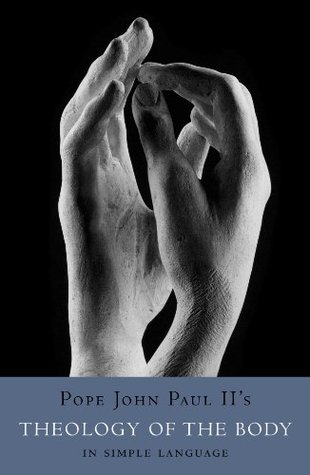More on this book
Community
Kindle Notes & Highlights
The family is the first community, the basic building block of society and the Church.
Therefore what God has joined together, let man not separate.”
A man and a woman don’t become one flesh on their own, Christ says—God unites them. Marriage
is not a mere social institution. It is a holy union instituted by God.
Man is part of the natural world, but, at the same time, he is set apart from it. He
he alone is made in God’s likeness.
he’s given stewardship over...
This highlight has been truncated due to consecutive passage length restrictions.
Thus, to the mystery of man’s creation is added the blessing of procreation.
The first chapter of Genesis is the basis for a Christian understanding of man—it tells the truth about who we are as human beings. It
theology of t...
This highlight has been truncated due to consecutive passage length restrictions.
we are also called to participate in the history of salvation—the redemption won by Christ’s life, death, and resurrection.
“We ourselves, who have the first fruits of the Spirit, groan inwardly as we wait eagerly for our adoption as sons, the redemption of our bodies” (Rom. 8:23).
I will make a helper suitable for him” (Gen. 2:18).
Masculinity and femininity can only be defined in relation to each other.
God is speaking of the solitude of “man” (male and female), not just the solitude of the male.
The problem of solitude arises only in the second creation story.
man’s vocation to exercise stewardship over the earth
Then, God makes a covenant with man: “You are free to eat from any tree in the garden; but you must not eat from the tree of the knowledge of good and evil, for when you eat of it you will surely die” (Gen. 2:16–17).
This covenant emphasizes man’s subjectivity.
Man isn’t an impersonal object, but a subject capable of rational thought ...
This highlight has been truncated due to consecutive passage length restrictions.
Right from the moment of his creation, man is in search of himself. As we would put it today, he is in search of his own identity.
he cannot identify completely with the physical world.
Only man possesses language and a moral sense—and these things cannot be explained in terms of the physical world alone.
And because he was essentially different from the rest of visible world, he was alone.
Adam became aware that he was a person.
Genesis 1 says that man was created in the image of God. In Genesis 2, he becomes the subject of a covenant with God. A person is meant to be a partner of God.
He must discern and choose
between right and wrong, life and death. Among all living creatures of the visible world, man alone has been chosen for communion with God. Every human person has a unique, exclu...
This highlight has been truncated due to consecutive passage length restrictions.
The body reveals the person. This phrase tells us all there is to know about the body. Science can examine our flesh in minute detail, down to our cells and even our DNA. But no amount of scientific exploration can replace the truth that our bodies reveal us, giving form to our innermost being and unique personality. Our bodies are sacramental—they make the invisible visible.
Through the ages, many philosophers have spoken of man as though he were divided into two distinct parts: soul and body. This isn’t the biblical view, though. In Genesis, the fundamental division is not between body and soul, but between dust and breath (life)—between unformed matter and living beings.
create Adam, God did not insert a soul into a body. Instead, Adam entered the world as a unified being, a “living soul” brought to life by the breath of God.
—it reveals man’s identity, giving visible form to his inner life.
Adam realizes that his life is entirely dependent on God.
God breathed life into man, but that breath still belongs to God. When it is taken away, man returns to dust. In this way, the free choice between life and death was set before Adam.
tardemah
Femininity is found in relation to masculinity, and masculinity is confirmed by femininity. They depend on each other.
Adam and Eve share a common source of life—God’s breath.
He immediately recognizes her body as a human body, even though she is of a different sex.
“bones” referred to the very core of one’s being.
“She is being of my being! A person like me!”
Adam and Eve were both alone—unique among the animals, unique in their personal relationship to the Creator. Because Adam and Eve shared in this solitude—as all human beings do—they were capable of a deep relationship with each other.
Together, Adam and Eve became a “communion of persons.”
deep communion with our fellow human beings.
community, we
We live for each other’s sake—not ...
This highlight has been truncated due to consecutive passage length restrictions.
human nature, our sharing of the divine image, our free will, and our bodies.
Adam and Eve reflected God’s image through their love for each other. In this way, they mirrored the glory of the divine communion of persons—the Holy Trinity.
To the extent that they live together in love, man and woman become a picture of the inner life of God. This might be the most amazing thing that we can say about marriage. From the beginning, the male and female bodies were created to form a deep unity.
dual being, male and female.
union


